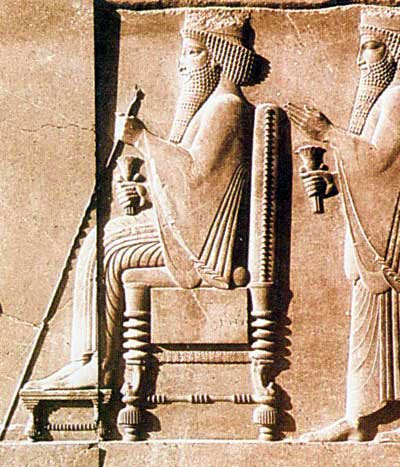King Neb’s New Covenant – 2
Of course, God’s new golden-haired boy got things wrong, as all Adams do when given the opportunity of glorious kingdom. The metal man in his dream (the new “empire-Tabernacle”) only had gold at the head, but King Nebuchadnezzar’s obelisk was gold from head to foot. This new king, under whom Israel was now a “Covenant vassal,” would be taught by God that he, too, was subject to a higher authority.
James Jordan observes that the four “animal” empires correspond to the four cherubim guarding God’s throne. The animals do not match exactly, because symbols are relationships. The animals describe the relationship of each empire to the people of God.
A couple of years ago, I heard Al Stewart at the Katoomba Men’s Convention give a good summary of the first part of the book of Daniel. Unlike liberal scholars, he corresponded the four beasts with the empires beginning with Babylon, not the Medes (the liberals can’t believe that Daniel wrote about Rome because it didn’t exist at that time in history, so they have to make Greece number 4. They split Medo-Persia into two empires, which doesn’t work at all since they were contemporaneous.) When Al got to Rome, he told us that Daniel’s prophecy doesn’t match history. He didn’t do what dispensationalists do and tell us that God’s Jewish clock stopped, but he didn’t have an explanation.
The explanation is one you will only find in Jordan’s work. The Roman empire did continue to exist after AD70, but Daniel, and all the prophets, view the world as God’s Tabernacle. The characters on the stage are viewed by their respective Covenant callings as they contribute to the plan of God in history. They are priestly or kingly ministers in His court.
This is a crucial factor to understand. It solves the mystery of the identity of the sons of God in Genesis 6. It explains why the Revelation describes the destruction of the Roman “Sea beast” in AD70. And it also explains why, in God’s economy, there are no more Jews. Their calling as “sons of God” was terminated with the Temple. Or rather, it was transformed through death and resurrection into a new calling. As John says, “Beloved, now are we the sons of God…”
Just like Judah, King Nebuchadnezzar came to a full understanding his calling as a vassal king through a process of death and resurrection. He was exiled by God as a Gentile beast into the wilderness and returned as a Man, an Adam, a Covenant head. Just as Joseph converted Pharaoh through his faithful service, Daniel converted Nebuchadnezzar.
The fact that these four Gentile empires were under God’s throne, vassal subjects in the kingdom of God, explains why their authority was transferred over the 500 year Restoration period. It was a form of “Covenant succession.” If the emperor cursed the people of God, the empire would be cursed, the kingdom handed over to another who would bring forth the fruit desired from their delegated authority, their Covenant calling. Belshazzar lost his kingdom overnight. Esther and Mordecai saved Persia from an unspeakable fate at the hands of God through the intentions of the serpent Haman. But Persia eventually fell to Greece, and Greece to Rome. The Revelation describes Rome’s “de-conversion” from a metal man back into a beast. The guardian put in place by God to provide a framework of law, protection, infrastructure and civilisation for the spread of the gospel was manipulated by Satan against the people of God. The family dog was turned against the children it was called to guard.
Rome did not cease to be an empire in AD70. Just as the calling of the Jews passed to the Christian church, Rome ceased to be a guardian for the people of God when the fifth empire arrived. Adam succeeded the animal kingdom on Day 6 and was supposed to be enthroned over it, rule over it, on Day 7. Jesus as Adam succeeded the animal kingdom—the Gentile empire—and took on the calling of the vassal emperors as guardian of the church. In these last days of the Old Covenant, God shook the world one more time, and the “times of the Gentiles” came to an end. [2]
__________________________________
[1] Have you got The Handwriting on the Wall yet? You will find all this and much more in Jordan’s groundbreaking work.
[2] This is actually the context of the “sheep and goats” judgment of the nations in Matthew 25. It is history, although it was most certainly a microcosm of the final judgment at the end of the Revelation.


























